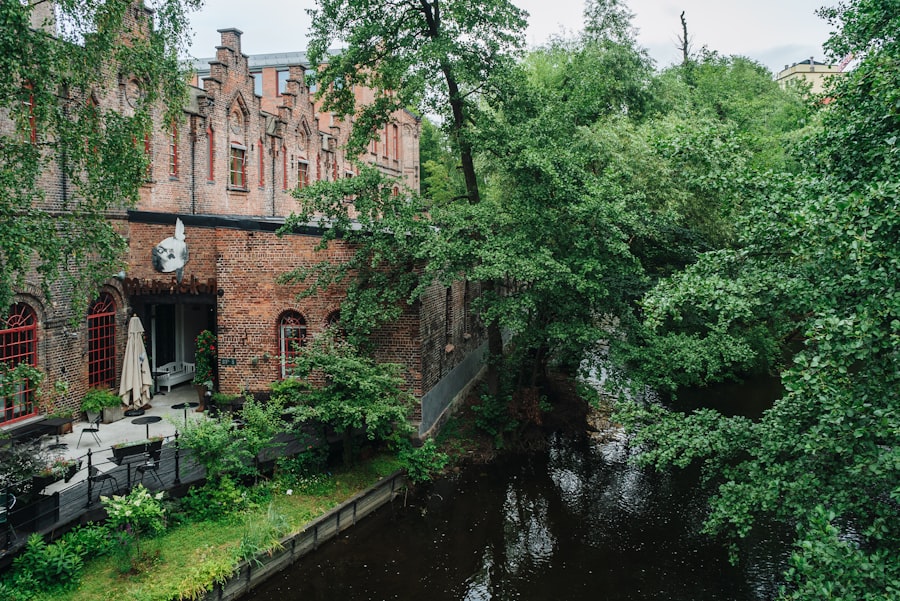Norwegian cuisine is a reflection of the country’s rich cultural heritage and its geographical diversity. Nestled between the rugged mountains and the vast coastline, Norway’s culinary traditions have evolved over centuries, shaped by the natural resources available and the influences of its history. The cuisine is characterised by its simplicity and reliance on fresh, high-quality ingredients, often sourced from the surrounding land and sea.
As one delves into the flavours of Norway, it becomes evident that the food is not merely sustenance; it is a celebration of the country’s identity and a testament to its people’s resilience. The essence of Norwegian cuisine lies in its connection to nature. The long winters and short summers have led to a reliance on preservation techniques such as smoking, drying, and fermenting, which have become integral to many traditional dishes.
This connection to the environment is not only about survival but also about honouring the land and sea that provide for the people. As we explore the various facets of Norwegian cuisine, we will uncover the traditional dishes that have stood the test of time, the seafood delicacies that highlight Norway’s maritime heritage, and the unique beverages that complement these culinary delights. Take the first step. Book a consultation with the Norway Relocation Group for your move to Norway.
Summary
- Norwegian cuisine is known for its use of fresh and locally sourced ingredients, as well as its focus on preserving traditional cooking methods and recipes.
- Traditional Norwegian dishes include hearty stews, cured meats, and potato-based dishes, reflecting the country’s history of farming and fishing.
- Seafood delicacies such as gravlaks (cured salmon) and rakfisk (fermented fish) are popular in Norwegian cuisine, showcasing the country’s rich coastal resources.
- Norwegian dairy products like brunost (brown cheese) and rømmegrøt (sour cream porridge) are integral to the country’s culinary heritage and are often enjoyed as part of festive meals.
- Bread and baking in Norway are diverse, with a variety of breads, pastries, and cakes being enjoyed, including the famous skillingsboller (cinnamon rolls) and lefse (potato flatbread).
Traditional Norwegian Dishes
At the heart of Norwegian cuisine are its traditional dishes, which often tell stories of the past and reflect the lifestyle of the people. One such dish is “klippfisk,” or dried and salted cod, which has been a staple in Norwegian households for centuries. This method of preservation allowed fishermen to store their catch for long periods, making it an essential food source during harsh winters.
Klippfisk is typically rehydrated and cooked in various ways, often served with potatoes and vegetables, showcasing the simplicity and heartiness of Norwegian fare. Another iconic dish is “lutefisk,” a unique preparation of dried fish that has garnered both admiration and controversy. The fish is soaked in a lye solution before being rinsed and cooked, resulting in a gelatinous texture that is often served with white sauce, peas, and potatoes.
Lutefisk is traditionally enjoyed during festive seasons, particularly Christmas, and is a testament to Norway’s culinary ingenuity in utilising available resources. These traditional dishes not only nourish but also connect Norwegians to their heritage, creating a sense of belonging and continuity through generations.
Seafood Delicacies

Given Norway’s extensive coastline and rich fishing grounds, it comes as no surprise that seafood plays a pivotal role in its culinary landscape. The country is renowned for its high-quality fish, particularly salmon, which has become synonymous with Norwegian cuisine. Freshly caught salmon can be enjoyed in various forms, from smoked to cured or grilled, each preparation highlighting the fish’s delicate flavour.
The traditional dish “rakfisk,” which consists of fermented trout served with flatbread and sour cream, exemplifies Norway’s unique approach to seafood preservation. In addition to salmon, other seafood delicacies such as cod, herring, and mackerel are also celebrated in Norwegian cooking. “Fiskesuppe,” or fish soup, is a comforting dish made with a variety of fish and shellfish simmered in a creamy broth, often accompanied by root vegetables.
This dish not only showcases the bounty of the sea but also reflects the warmth of Norwegian hospitality. The emphasis on fresh seafood in Norwegian cuisine underscores the importance of sustainable fishing practices and the deep respect Norwegians have for their marine resources.
Norwegian Dairy Products
Dairy products hold a special place in Norwegian cuisine, with a variety of cheeses and fermented products that are integral to daily life. One of the most beloved cheeses is “brunost,” or brown cheese, which is made from whey and has a distinct caramel-like flavour. This cheese is often enjoyed on bread or crispbread, providing a sweet contrast to savoury toppings.
Brunost has become a symbol of Norwegian culture, representing the country’s dairy farming traditions and its penchant for unique flavour combinations. In addition to cheese, other dairy products such as “kefir” and “yoghurt” are popular in Norway. Kefir, a fermented milk drink, is known for its probiotic properties and is often consumed as part of a healthy breakfast or snack.
The use of dairy extends beyond just cheese and drinks; traditional dishes like “rømmegrøt,” a creamy porridge made from sour cream, flour, and milk, highlight the versatility of dairy in Norwegian cooking. These products not only contribute to the flavour profile of Norwegian cuisine but also reflect the agricultural practices that have shaped the country’s food landscape.
Bread and Baking in Norway
Bread holds a significant place in Norwegian meals, serving as both a staple food and a vehicle for various toppings. Traditional Norwegian bread is often dense and hearty, made from whole grains such as rye or barley. “Flatbrød,” a thin crispbread, is particularly popular and can be enjoyed with cheese, cured meats, or fish.
This type of bread has been a part of Norwegian culture for centuries, often baked at home using family recipes passed down through generations. Baking is an essential aspect of Norwegian culinary traditions, especially during festive occasions. “Kransekake,” a towering cake made from almond paste and icing sugar, is commonly served at weddings and celebrations.
The intricate design of this cake reflects the artistry involved in Norwegian baking. Additionally, “lussekatter,” saffron buns traditionally enjoyed during Advent, showcase the influence of seasonal ingredients on Norwegian baking practices. The emphasis on bread and baked goods in Norway not only highlights the importance of carbohydrates in the diet but also serves as a means of bringing people together during communal meals.
Norwegian Drinks and Beverages

Norwegian beverages are as diverse as its cuisine, ranging from traditional alcoholic drinks to refreshing non-alcoholic options. One of the most iconic drinks is “aquavit,” a spirit flavoured with herbs and spices, often enjoyed during festive gatherings or paired with traditional dishes. Aquavit has deep cultural roots in Norway and is typically served chilled in small glasses as part of celebratory toasts.
In addition to spirits, Norway boasts an array of non-alcoholic beverages that reflect its natural bounty. “Kraft” or herbal teas made from local plants are popular choices for those seeking warmth during cold winters. Furthermore, “multebærsaft,” or cloudberry juice, is a sweet beverage made from one of Norway’s prized berries, often enjoyed during summer months.
These drinks not only complement meals but also embody the essence of Norwegian hospitality, inviting guests to partake in the country’s rich flavours.
Festive and Seasonal Foods
Festivals and seasonal celebrations play an integral role in shaping Norwegian cuisine. Christmas is perhaps the most significant time for culinary traditions, with families gathering to prepare special dishes that have been passed down through generations. “Julebord,” or Christmas buffet, features an array of dishes such as ribbe (pork ribs), pinnekjøtt (dried lamb ribs), and various side dishes that celebrate the season’s bounty.
Similarly, Easter brings its own set of culinary delights, with “lam” (lamb) taking centre stage as families gather for festive meals. The arrival of spring also heralds the use of fresh ingredients such as asparagus and new potatoes in traditional dishes. These seasonal foods not only reflect Norway’s agricultural cycles but also foster a sense of community as families come together to celebrate their heritage through food.
Influences from Other Cultures
Norwegian cuisine has not developed in isolation; it has been influenced by various cultures over time due to trade routes and historical connections. The introduction of spices from Asia during the Viking Age transformed how Norwegians approached cooking, leading to more complex flavour profiles in traditional dishes. Additionally, immigration has brought new culinary influences that have enriched Norway’s food landscape.
For instance, Middle Eastern flavours can be found in some contemporary Norwegian dishes, while Italian pasta has become popular among Norwegians seeking comfort food. This blending of cultures highlights Norway’s openness to new ideas while still maintaining its culinary roots. As globalisation continues to shape food trends worldwide, Norway’s cuisine remains dynamic and ever-evolving.
Eating Etiquette in Norway
Understanding eating etiquette is essential when dining in Norway, as it reflects the country’s cultural values around hospitality and respect. Norwegians typically value modesty and simplicity during meals; therefore, it is customary to wait for everyone at the table to be served before beginning to eat. Additionally, it is polite to keep one’s hands above the table while dining rather than resting them on one’s lap.
When it comes to beverages, it is common practice to make eye contact while toasting before taking a sip; this gesture signifies goodwill among diners. Furthermore, Norwegians often prefer informal dining settings where conversation flows freely rather than rigid formalities. This relaxed approach fosters camaraderie among guests while allowing everyone to enjoy their meal fully.
Where to Experience Norwegian Cuisine
For those eager to experience authentic Norwegian cuisine firsthand, Oslo offers an array of dining options that showcase traditional flavours alongside modern interpretations. The NLS Norwegian Language School provides not only language courses but also cultural immersion experiences that include culinary workshops focused on traditional cooking techniques and local ingredients. Restaurants such as “Fjord” specialise in seafood dishes that highlight Norway’s maritime heritage while incorporating contemporary flair into their presentations.
Additionally, local markets like Mathallen offer visitors an opportunity to sample various artisanal products ranging from cheeses to cured meats—all representative of Norway’s diverse culinary landscape.
Embracing the Flavours of Norway
In conclusion, embracing the flavours of Norway means delving into a rich tapestry woven from tradition, nature, and cultural influences. From hearty traditional dishes that tell stories of resilience to exquisite seafood delicacies that celebrate maritime heritage, each bite offers insight into what it means to be Norwegian. The emphasis on quality ingredients—whether sourced from land or sea—reflects a deep respect for nature that permeates every aspect of Norwegian cuisine.
As one navigates through this culinary journey, it becomes clear that food serves as more than mere sustenance; it fosters connections among people while honouring cultural heritage. For those looking to explore these flavours further while learning about Norway’s language and culture simultaneously, enrolling in courses at NLS Norwegian Language School in Oslo presents an excellent opportunity for immersion into both language learning and culinary experiences alike—truly embracing all that Norway has to offer!
Learn more about the Norwegian classes at the NLS Norwegian Language School in Oslo

